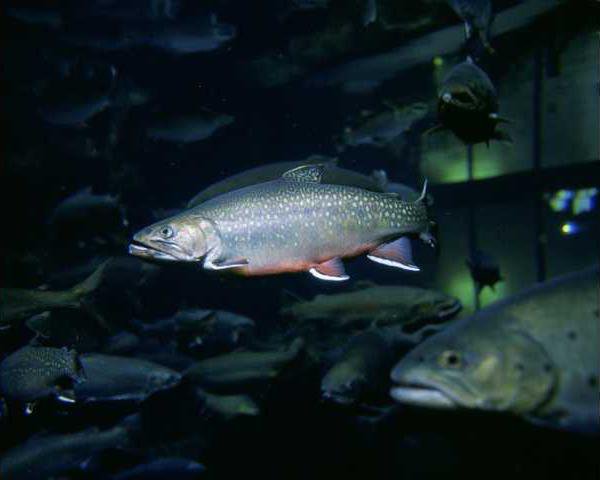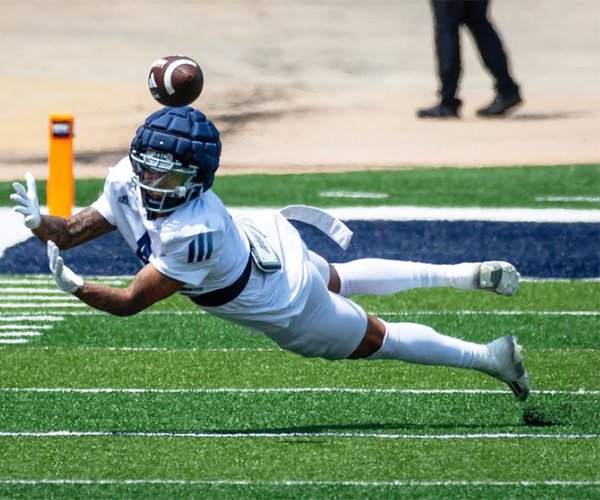Y'all know I’m a proponent of loading up the truck and taking on outdoor adventures especially one that involves wetting a hook. With that said let me steer you toward a unique trip. Head to the mountain streams north of Athens and try your luck on some wily trout. It’s an exhilarating experience and it will get you out of the flatlands for a few days.
Trout fishing in North Georgia is now moving full speed ahead with the seasonal streams having been open since March 26th. Georgia’s trout streams have three major species available including the rainbow, brook and brown.
The rainbow trout is one of the favorites of fans of this sport because of their feisty pull, their affinity to take artificial flies or natural baits, their beauty and their tasty flesh. They typically flourish and are most active in water temperatures between 52 and 68 degrees and prefer clear flowing waters and gravel or sandy bottoms. The state record is 17 pounds, 8 ounces caught in the Soque River in 2004.
The brook trout is considered one of the easiest to catch of the three Georgia species and prefers similar conditions as the rainbow but is most active is slightly cooler water than its cousin the rainbow. The keys to catching them are to duplicate the nearby food sources and finding suitable current situations that are shaded. Overhanging tree limbs offer shade, attract insects and give the trout protection from birds of prey. The state record is 5 pounds, 10 ounces caught in Waters Creek in 1986.
The brown trout can tolerate slightly warmer water temperatures and feed primarily on worms, minnows, insects and crustaceans. They are more likely to be found in quiet water just off the current and that has sufficient cover such as logs, cuts, and gravel shelves. Browns are the most wary of the trio and often feed at night. The state record is 18 pounds, 6 ounces caught from the Chattahoochee River in 2001.
Early season tactics for trout usually depend on water temperature. They are less active if the water temperatures get below fifty degrees so that’s one consideration. As of now that should not be a problem with the weather we’ve had. If, however you are worried that water might be too cold remember that small streams will warm up faster and hit those early on. For this same reason afternoon fishing will often be better than mornings in the earliest portions of the season.
One problem you might encounter in the spring is high, somewhat muddy water due to rainfall. Again the smaller streams will be your best bet because they will clear up faster.
Another tip for early spring time is to think about a slower presentation regardless of the type of bait or lure you are using. Find those places where the water is relatively still but still close to the current line and keep your bait or lure in that vicinity as long as possible.
All the veteran trout fishermen will tell you to cast upstream so that your lure is always working downstream at about the same speed (or slightly slower) as the water flow. Trout are going to be facing upstream looking for their meals as it comes by on the current. They are going to be wary of anything moving against the flow and you will spook a lot of fish if you try wading and fishing downstream.
If you are using live bait there are several good ones to choose from. Night crawlers, wax worms, minnows, red wigglers, and salmon eggs are among the top choices. Make sure you have enough lead to keep your bait close to the bottom but not so much that the bait drags along very slowly. You will present a more realistic look if it’s moving along just above the bottom with the flow and you won’t get hung up so much. Rule of thumb is to use as little weight as you can get away with.
If you are a novice fly fisherman the best general advice is to try to “match the hatch” which is to say tie on a fly that resembles insects that you have noticed in and around the stream. That will change in different times of the year. The other best method is to find the local fishermen and question them on what’s working at present.
If you want to use lures small in-line spinners like the Panther Martin and Mepp’s spinners are good choices. Another favorite is a small, shallow diving Rapala or any other lure that resembles a minnow. Light spinning tackle is ideal for this method.
If I were going tomorrow I’d probably go to Noontootla Creek in Fannin County (Blue Ridge, Georgia). Noontootla is not one of the stocked streams so if you would rather catch the smaller, fish in greater numbers it’s not the place for you. This creek offers the opportunity to catch larger trout (although it’s a catch and release stream) in a beautiful environment. There’s also the Noontootla Creek Farms stretch just before the creek empties into the Toccoa River. This is a privately owned operation that manages two miles of the Noontootla and offers a chance to catch a twenty inch rainbow. You must go with a guide and use a fly rod in this area. The guides operate out of Unicoi Outfitters’ Blue Ridge shop.
For regulations, maps and other information on trout fishing and available places to go in Georgia check out www.georgiawildlife.com/node/1307
If you need more information on this topic don’t hesitate to send me an e-mail and we’ll get it figured out.
Articles and columns by Alvin Richardson about hunting, fishing and other outdoor sports will appear weekly in the Statesboro Herald. Richardson can be reached at dar8589@bellsouth.net.
Outdoor Life: Georgia trout fishing is going full stream ahead





